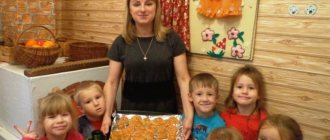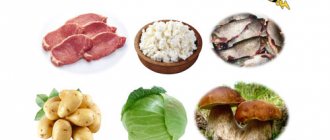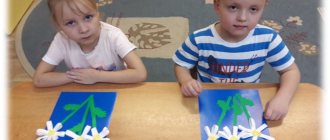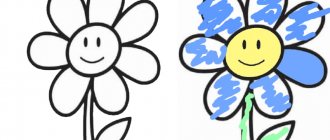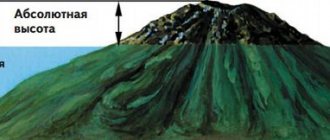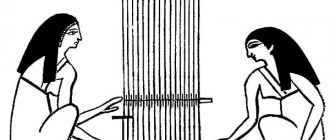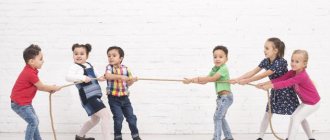Summary of direct educational activities on the topic: “Hen and Chicks”
Aidabekova Anna Gusenovna teacher of the first qualification category of the GBDOU kindergarten No. 44 of the compensatory type St. Petersburg, Kolpino
Participants: children with mild mental retardation aged 3-7 years.
Number of children: subgroup 4 people.
Duration: 15 minutes
Goal : introduce children to chickens and chickens.
Tasks:
1. Clarify children’s ideas about poultry - hens and chicks.
2. Learn to answer questions using means of communication accessible to children: words, gestures.
3. Learn to reproduce specific actions shown by the teacher, develop auditory attention, and activate the vocabulary.
Pedagogical intent:
Educational area Socialization
Tasks:
- create interest in children in gaming activities together with the teacher.
— consolidate children’s knowledge about the body structure of chickens.
- consolidate the ability to distinguish a chicken from other birds.
Educational field Communication
Tasks:
— to cultivate a communicative culture in children: the ability to answer the teacher’s questions, perform creative work in a subgroup.
Educational field Artistic creativity
Tasks:
— To develop the ability to glue lumps of yellow paper onto a chicken stencil according to a sample;
- take the lumps one at a time, spread the glue with smooth movements;
- learn to work carefully;
Preliminary work
Material:
Character - chicken, yellow lumps of paper, oilcloth, napkins, glue, brushes, demonstration pictures depicting chicks: ducks, goose, chicken.
With children, carried out :
We looked at poultry and chicks, played didactic games with them, read about them, created homemade books about poultry, drew and sculpted.
Progress of joint activities:
- Organizational stage: outdoor game.
- Main stage: conversation, didactic game.
- Preparation for application
- Finger gymnastics
- Pasting lumps
- Reflection stage
The character's entrance is a pockmarked hen. (teacher). Say hello to the children: show the children how big and beautiful the chicken is, with wings and beak, what kind of comb and eyes it is, repeat with the children: head, comb, eyes, beak, neck, wings, tell the children that I live in a poultry yard with other poultry.
Invite children to turn into pet birds. ( active game “Our ducks in the morning...” )
Ask the children how I call my chickens? That’s right, “Ko-ko-ko,” says the chicken. But there are no chickens in sight. Where are the chickens?
Invite children to choose from the proposed pictures an image of a chicken and describe it. Yellow, fluffy, small. What kind of chickens? How do chickens talk? That's right, "pee-pee-pee" - say the chickens.
Didactic game “Show and name.”
Please show me the chicken's beak. Where are the eyes, wings, tail? (Individual work). Children point with their fingers and name body parts.
Tell the children that the chicken is bored without chickens, help me glue together chickens from lumps of paper.
Sit at the tables, keeping your back straight, legs under the table.
To keep your fingers from getting tired, invite the children to play a finger game .
The crested hen walked around the yard, led the children (walking with their fingers on the table), fanned the comb (fist-palm), amused the little children (flashlights)
Show the sequence of work, place the sample at the children’s eye level.
Offer to start doing the work.
Result: children with their chickens come up to the chicken and give it to her.
The hen (teacher) really likes chickens. I want to play with you like chickens.
Physical school
The chicken went out for a walk, to nibble some fresh grass (the children follow the teacher in a circle)
And behind her are the boys, yellow chickens.
“Ko-ko-ko, ko-ko-ko, don’t go far, (we shake our fingers)
Row with your paws, look for grains. (sit down and row with your hands)
The teacher is a chicken, the children are chickens. Children repeat the movements after the teacher.
The children are great, they did the task well, the hen is happy and says that it’s time for the hen and chickens to go home to the chicken coop, but in the evening we will be back to show moms and dads what beautiful chickens you made. Goodbye children. The chicken leaves.
Planned result:
— Reinforce in your memory that chickens are chicken chicks.
— To consolidate knowledge of the body parts of chickens.
— Involve children in performing applique according to the model, in the correct sequence.
Further work:
— Continue to introduce children to other types of artistic creativity.
— Continue to introduce children to poultry and their chicks.
Author: Aidabekova Anna Gusenovna Position: teacher of the first qualification category Place of work: GBDOU kindergarten No. 44 of compensatory type Location: St. Petersburg, Kolpino
Date of modification: 03.12.2014 Date of publication: 03.12.2014
Summary of a lesson on speech development in the secondary group “Chickens”
Tatyana Vladimirovna Gorbatovskaya
Summary of a lesson on speech development in the secondary group “Chickens”
Topic: Compiling a story based on the painting “ Chickens ”.
P/s: Teach children to write a short descriptive story based on a picture. Exercise the ability to compare (by appearance, behavior)
rooster, hen and chicks.
Strengthen the skill of using complex and simple common sentences in answers to the teacher’s questions. Develop attention and the ability to answer questions loudly and clearly.
Progress: Today we will learn to write a story based on a picture about a pet. You will find out which one you will be talking about when you solve the riddles:
1. Golden comb,
Why do you get up early?
You sing songs loudly,
Don't you let Vanya sleep?
Counts time during the day.
Collects under the wing.
That's right, that means today we will be writing a story about a rooster, or rather about the rooster's family. (The painting “ Chickens ” is displayed on the stand. Children look at it and answer questions)
-Who is depicted in this picture?
-Look at the rooster, describe its appearance. What rooster? (Large, beautiful, colorful, vocal, cocky, loud-voiced. Covered with feathers. On the neck and wings the feathers are orange, on the chest are purple, on the tail they are long and green. The head is small, and on it is a large red comb and a red beard. Paws with claws and spurs).
- What is the rooster doing? (The rooster raised his leg, raised his head and screams cuckoo)
- Who is next to the rooster? ( Chickens )
What can you say about them? What are they? (smaller than a rooster, single-colored, plump, chickens have a small comb and beard, a short tail).
— What do chickens ? (raking the earth, showing the chickens how to look for a worm, nibbling grass, pecking at the grain that the hostess sprinkled).
-Look at the chicken and the rooster, are they the same or not? (they are similar in that they have a comb and beard, wings, beak and tail, but differ in size and character).
— What is the character of a rooster and hen? (the rooster is important, pugnacious, and the hen is a caring, gentle and loving mother)
.
The rooster is strong, the chickens. (still weak)
. Yes, the chickens are still weak, helpless, and the chicken takes care of them.
PHYSMINUTE. Walk like a rooster, rake the ground like a chicken, peck grains like chickens.
Back to the picture Listen to the outline to help you create a story.
— What can you call the picture?
—Where does the action take place?
- What happened here?
Try to use in the story the words and expressions that you used when looking at the picture. (Children take turns writing 4-6 stories. Others choose whose story turned out better and give reasons for their choice).
- Now listen to K. Ushinsky’s story “The Cockerel with his Family” and tell me what kind of cockerel it is written about.
"Spring". Summary of a lesson on speech development in the middle group. “Spring” Lesson on speech development for children of the middle group Objectives: • Teach children to answer questions, develop dialogic speech, and finish speaking.
Summary of an open lesson on speech development in the middle group. Sound culture of speech: sound [h]. Summary of an open lesson on speech development in the middle group. Topic: sound culture of speech: sound h. Purpose: teaching correct pronunciation.
Summary of a lesson on speech development in the middle group on the topic “Insects” Frontal lesson in the middle group. Topic: "Insects" Purpose: 1. Work on the prosodic side of speech: breathing, speech rhythm. 2. Work.
Summary of a lesson on speech development in the middle group on the topic “Vegetables” Program content: To develop children’s ability to listen carefully to the teacher and answer questions; Strengthen knowledge about vegetables; Pin.
Summary of a lesson on speech development in the middle group. Theme "Winter". Summary of a lesson on speech development in the middle group Theme “Winter”. Educational goals: To clarify and expand the understanding of winter and its signs.
Summary of a lesson in the middle group on speech development “Shop” Topic: “Shop” Program content: Teach children to compose descriptive stories based on a model; practice correct pronunciation of sounds.
Speech development as a means of children's creative imagination. Summary of a lesson on speech development in the middle group. Notes of a lesson on speech development in the middle group. Topic: “Speech development as a means of children’s creative imagination” Purpose: 1. Enrich.
Source
Lesson notes on the painting “Bird Yard” in the middle group
Tatiana Golonkova
Lesson notes on the painting “Bird Yard” in the middle group
Subject. Story based on the painting " Poultry Yard "
.
Educational goals: Learning to write a story based on a picture .
Developmental goals: Development of coherent speech, clarification of vocabulary on the topic “Poultry”
, formation of natural science concepts, development of thinking, visual attention, creative imagination.
Educational goals: developing a caring attitude towards pets.
Preliminary work: listening to the Russian folk tale “Ryaba Hen”
, the story by K. Ushinsky
“Cockerel with his family”
, the fairy tale by V. Suteev
“Chicken and Duckling”
, the story by E. Charushin
“Ducks”
, memorizing quatrains from the coloring book
“Poultry”
.
